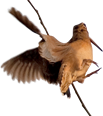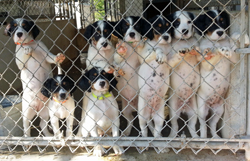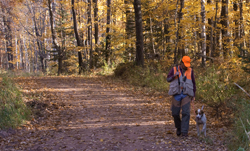Grouse dog…quail dog
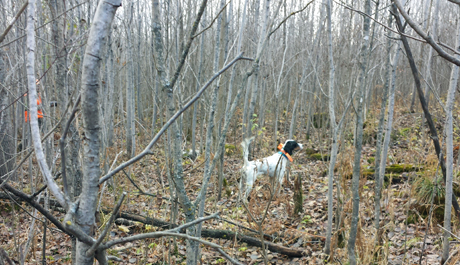
Northwoods Carly Simon points a good distance from a single ruffed grouse in northern Minnesota.
The goal of the breeding program that Betsy and I began 19 years ago has always been to produce the best grouse dogs anywhere. To make our string, a dog—whether English setter or pointer—had to prove that it could find, point and handle ruffed grouse. Further, it had to point not just one bird or two, but grouse after grouse after grouse.
Since our focus was ruffed grouse of the north woods, we didn’t consider southern birds. For the past two winters, though, Betsy and I have lived in southwestern Georgia and have trained on bobwhite quail. During recent hunts on several beautiful quail plantations, we had the opportunity to directly compare our setters and pointers to those used by professional guides. It’s clear (and gratifying) that our dogs do extremely well here on these wild birds.
We think several similarities exist between grouse and quail dogs.
Wild birds in the woods.
Habitat for bobwhite quail in southwest Georgia consists of tall, longleaf and loblolly pines with low-growing shrubby and herbaceous plants. In other words, it’s similar to woods where ruffed grouse live.
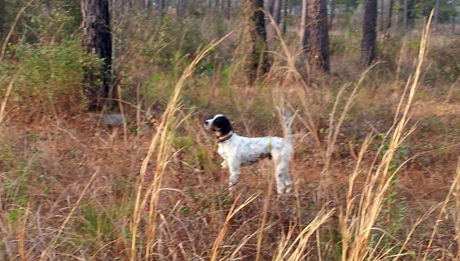
In typical bobwhite quail cover, Northwoods Carly Simon points a covey on a southwest Georgia plantation.
Scenting ability.
A covey of 12 or more quail can be as difficult to find as a single grouse and a dog needs a discerning nose to consistently find them. While bobwhites do allow a dog to get closer, they can be touchy, especially in January and February, about the approach of the dog. A good dog points from a distance.
Desire to find birds under tough conditions.
Grouse dogs are constantly getting hit by sticks, grasses and briars and their feet take a beating from all kinds of debris on the forest floor. Too, early in the season, weather conditions are often warm and dry. Circumstances are similar for quail dogs. A good quail dog must have tenacity and desire to keep hunting when cover and conditions are tough.
Hunting range and pattern.
The wooded habitat for both ruffed grouse and quail is quite uniform and birds can be found anywhere. The key for finding both is coverage, not range. Plantations mow the underbrush in a grid pattern and a dog should hunt these strips in a forward, crisscrossing pattern at an ideal range of 50 – 100 yards.
Evasive tactics.
Early in the season, both ruffed grouse and quail are easier for a dog to handle. By late season, both birds are wily and wary and use every tactic possible to avoid detection—from sitting tight to running away to flushing wild at the approach of the hunting party.
One advantage, though…
Quail do one have one distinct advantage over ruffed grouse when it comes to survival. A ruffed grouse is a loner and relies on its own individual instincts and experience. Since quail are covey birds, they are dependent on each other and usually react as a single unit. Further, the wariest bird enhances the survival of the entire covey.

